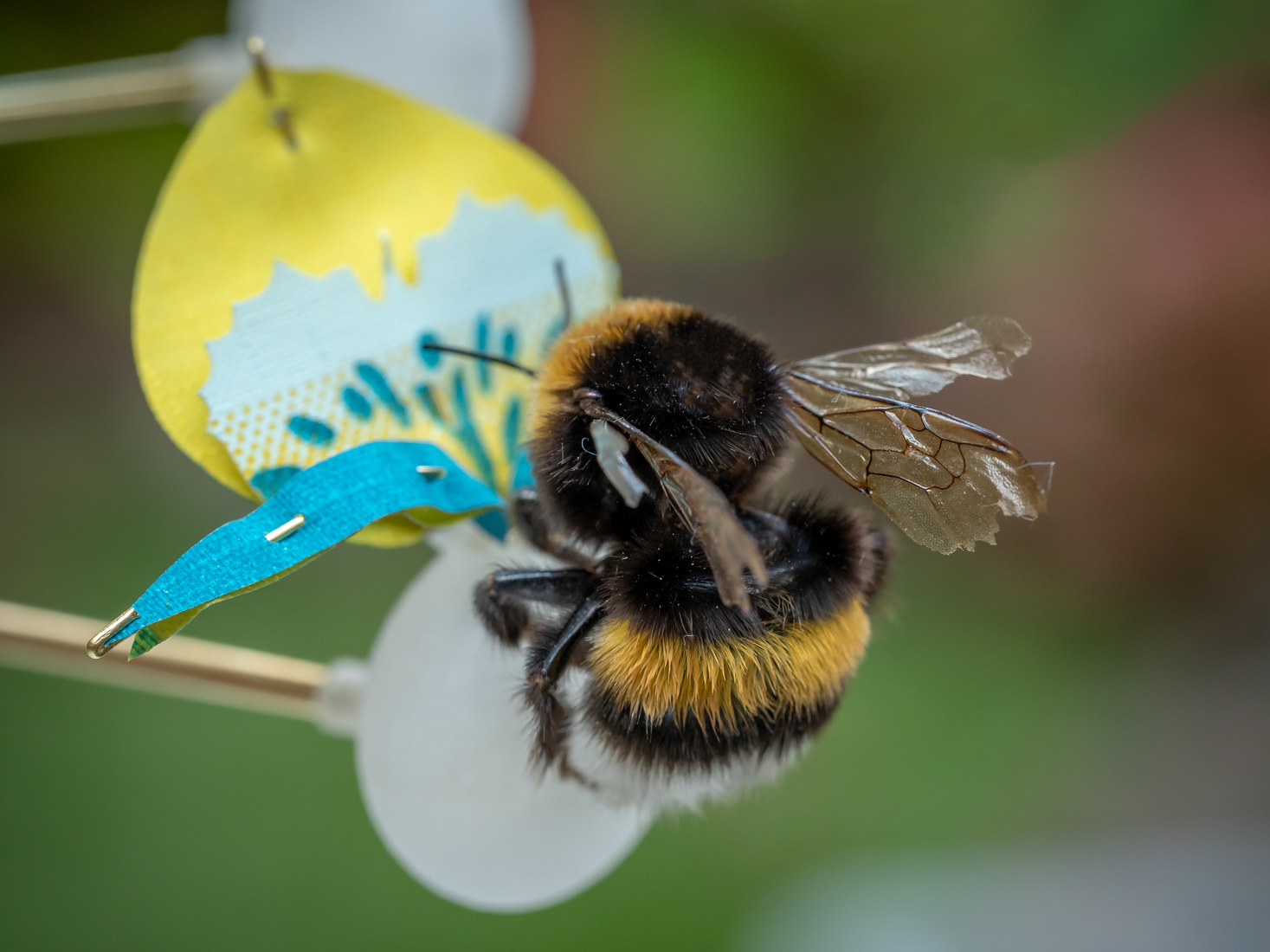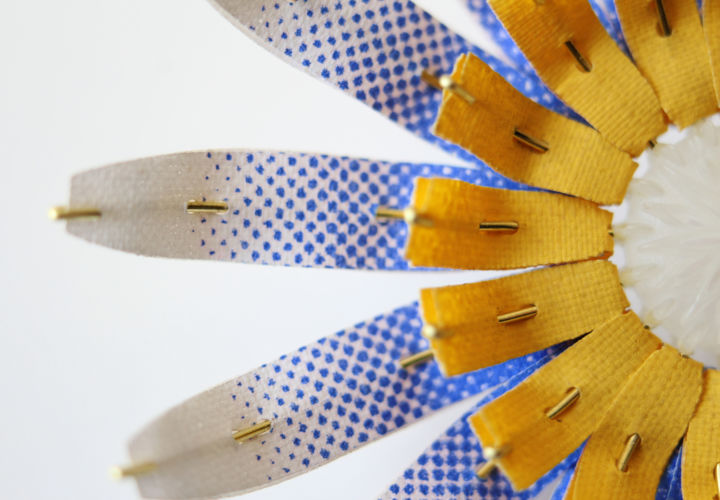EDITOR’S NOTE: In Germany alone, the insect population has declined by 75% across both rural and city areas over the last 27 years. To address this issue, designer Matilde Boelhouwer has developed Insectology: Food for Buzz, a series of artificial flowers that turn rain into sugar water and can serve as emergency food for city-dwelling insect pollinators. Her hope is to bring back the buzzing and fluttering sounds of those small creatures we can’t do without.

To designer Matilde Boelhouwer, the bound connecting flowers and insects is one of the most fascinating one to be found in nature. In her words, “Flowers evolved to serve insects, and insects evolved to serve flowers simultaneously.” Nowadays however, with most of the world population living in urban jungles made of concrete and stone, the of flower population has dwindled. This, combined with the use of pesticide, the consequences of climate change, and the disruption of insects’ natural habitats, has resulted in a drastic decline of the insect population.
Determined to address this issue, Boelhouwer started her research journey with Dr. Marco Roos, a botanist and biodiversity specialist working at the Naturalis Biodiversity Center in Leiden, in the Netherlands. There, she learnt that the majority of green areas in public spaces are not maintained, which almost always leads to plants that don’t flower. What is more, people often want their private gardens to require little or no upkeep, which leads to an additional loss of flowers.
Making urban environments flower again can stimulate insect populations and help them thrive. But how can we make a concrete base blossom? How can we convince a bee to eat something it isn’t used to? Boelhouwer’s answer is Insectology: Food for Buzz, a series of artificial flowers that turn rain into sugar water and serve as emergency food sources for city-dwelling insect pollinators, namely bees, bumblebees, hoverflies, butterflies, and moths. Each self-sustaining flower is made up of laser-cut, screen-printed polyester petals, with a small 3D-printed container attached at the centre, which is connected to a hollow 3D-printed stem. These containers are used to collect and contain rainwater, which is transported down the stem to a tank containing sugar, where the two mix. The solution is then pumped back up into the small containers.
Each artificial flower is designed to cater to the taste of a specific insect: Asteraceae, most appreciated by bees and hoverflies; Fabaceae, liked by moths and butterflies; and Lamiaceae, which are loved by bumblebees. As bees see the world as honeycomb-shaped pixels, they rely heavily on their colour vision range of green, blue, violet and yellow to navigate. To attract bees from afar, Boelhouwer used a contrast of violet and yellow. Adjusted to the length of their tongues, faceted eyes and shape of preference, these flowers could be employed in our urban environments, where flowers and planted areas are often rare and far between.










